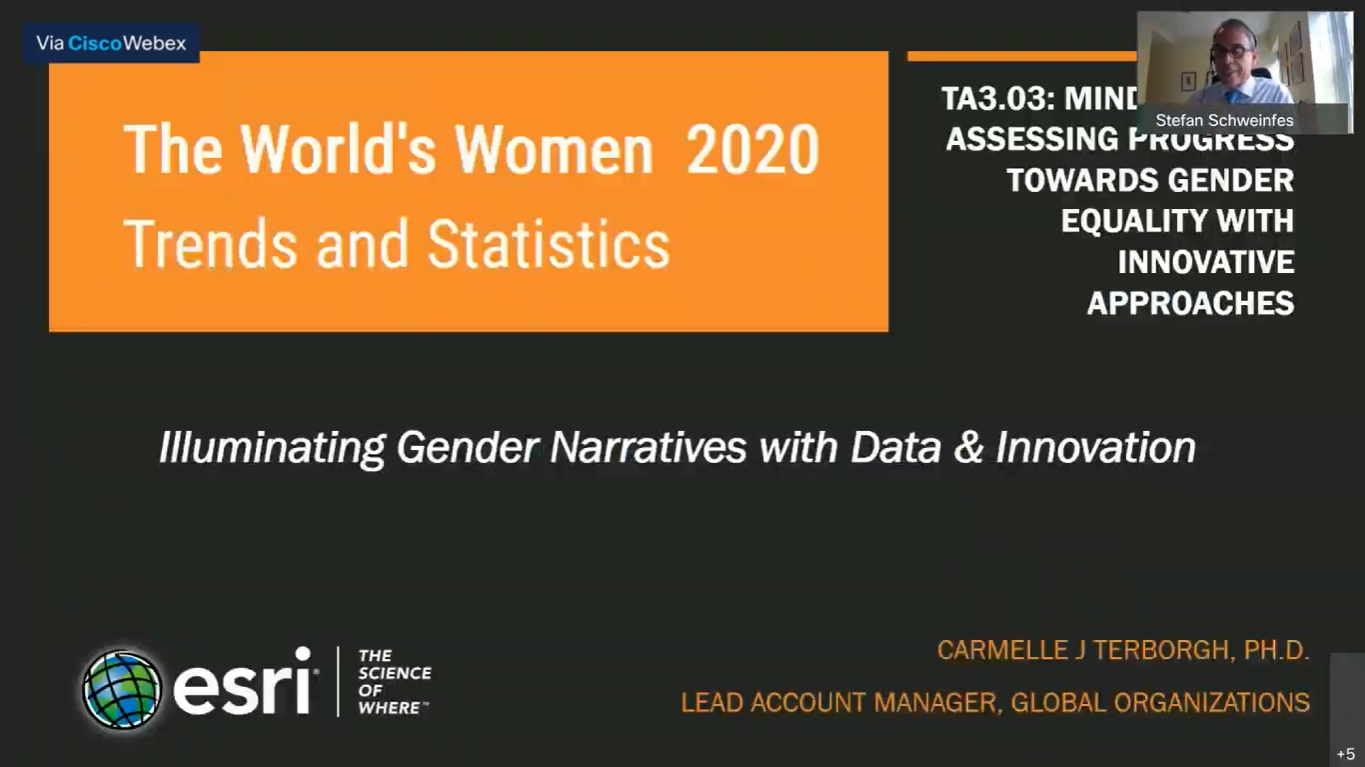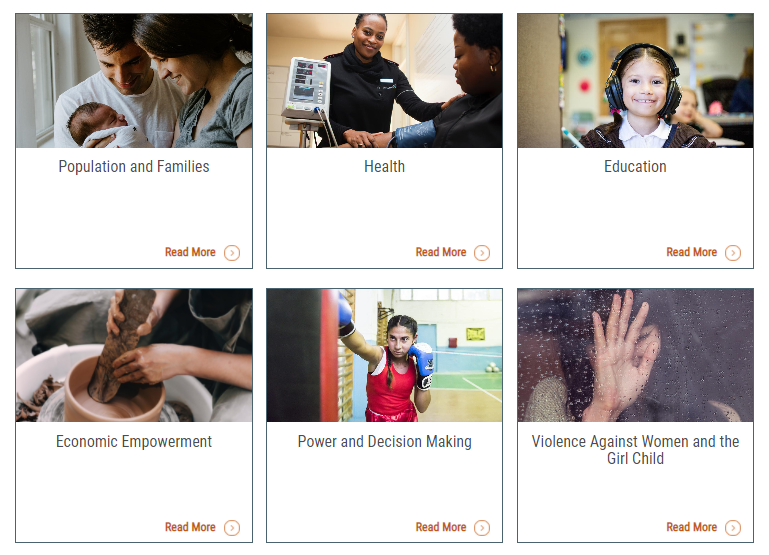Launch of the "Women's World 2020: Trends and Statistics portal"
at the UN World Data Forum
On the occasion of World Statistics Day, between 19-21 October was held the UN World Data Forum, which brings together data and statistical experts and users from governments, civil society, the private sector, donor and philanthropic bodies, international and regional agencies, the geospatial community, the media, academia and professional bodies. Data experts and users gather to spur data innovation, mobilize high-level political and financial support for data, and build a pathway to better data for sustainable development.
During the forum on the occasion of the 25th anniversary of the adoption of the Beijing Declaration and Platform for Action a special session was dedicated to: Assessing progress towards gender equality with innovative approaches. The session focused on the launch of the Women's World 2020: Trends and Statistics portal. Since the adoption of the Platform for Action, periodically, with 5-year intervals, a report is prepared highlighting the progress made in the field of gender equality, the latest report also taking stock of progress in advancing women’s rights, empowering women and girls and ensuring gender equality in the world community.

The platform is a collection of 100 STORIES providing up-to-date assessments of progress towards gender equality in the following six critical areas, including, under each area, the impact of COVID-19 on women:
- Population and families
- Health
- Education
- Economic empowerment and asset ownership
- Power and decision-making
- Violence against women and the girl child.

At the same time, 168 open data sets are available that contain a multitude of indicators available in all countries of the world.
The portal was prepared by the United Nations Statistical Division (UNSD), Department of Economic and Social Affairs (DESA) and is the result of the collective effort of a wide range of contributors around the world.
The National Bureau of Statistics is one of the 14 statistical offices that have contributed to the development of this product. The topic addressed in The Story of the Republic of Moldova refers to Social Protection and old-age pensions approached from the perspective of gender equality.
From a human rights perspective, the social protection system must contribute to ensuring an adequate standard of living, as well as providing services, goods necessary to live with dignity, autonomy, non-discriminatory treatment and equal opportunities for all members of society, reducing the risk poverty and social exclusion, including giving women and men the opportunity to enjoy gender equality. Given that not all older people are able to supplement their income once they retire, social protection becomes for them the main means of ensuring economic security, helping to meet basic needs, and the weak link between income from the active period and those from the post-retirement period exposes the elderly to a higher level of poverty and social exclusion.
Some key points from the story of the Republic of Moldova:
- In the Republic of Moldova, women live longer than men (8.8 years more in 2018), oftentimes alone in financial deprivation and insecurity.
- In 2018, the proportion of women among the total population receiving any pension and receiving an old-age pension accounted for 64.5% and 70.6%, respectively.
- In 2018, old-age pension replacement rates for women (26.2%) and men (28.6%) were less than the minimum level required by the International Labour Organization (ILO) Social Security (Minimum Standards) Convention (Convention No. 102) (at least 40%). The gender gap in the old-age pension replacement rate was more prominent among women and men aged 60—64 (2.6 percentage points) and the largest in districts in the southern part of the country.
- Seniors aged 75 and over rely significantly more on pensions as a main income source (96.6% for women and 97.6% for men) than the “younger” old, aged 60—65 (79.8% for women and 46.9% for men).
- In 2018, women represented around half (50.3%) of pensioners with disabilities receiving disability pensions and slightly more than half (52.7%) of those receiving the minimum amount of disability pensions. Men represented 73% of those receiving the minimum amount of severe disability pensions.
- The rapid aging of Moldova’s population and the high migration rates among its working-age population have put pressure on the pension system. In 2017, emigration rates reached a peak of 121 per 1,000 for men aged 25—29 and 87 per 1,000 for women aged 20—24.
The whole story can be vizualized below:
